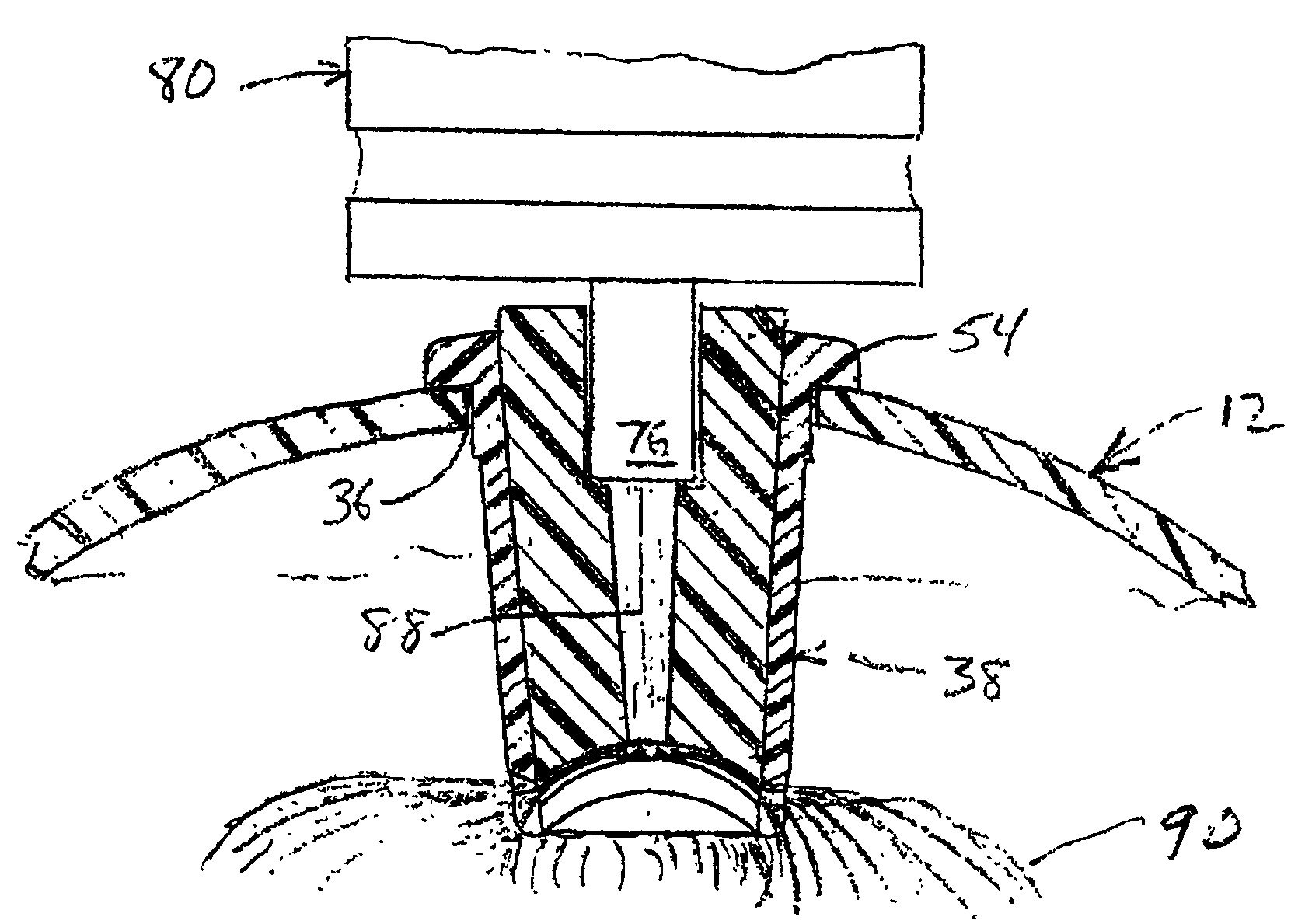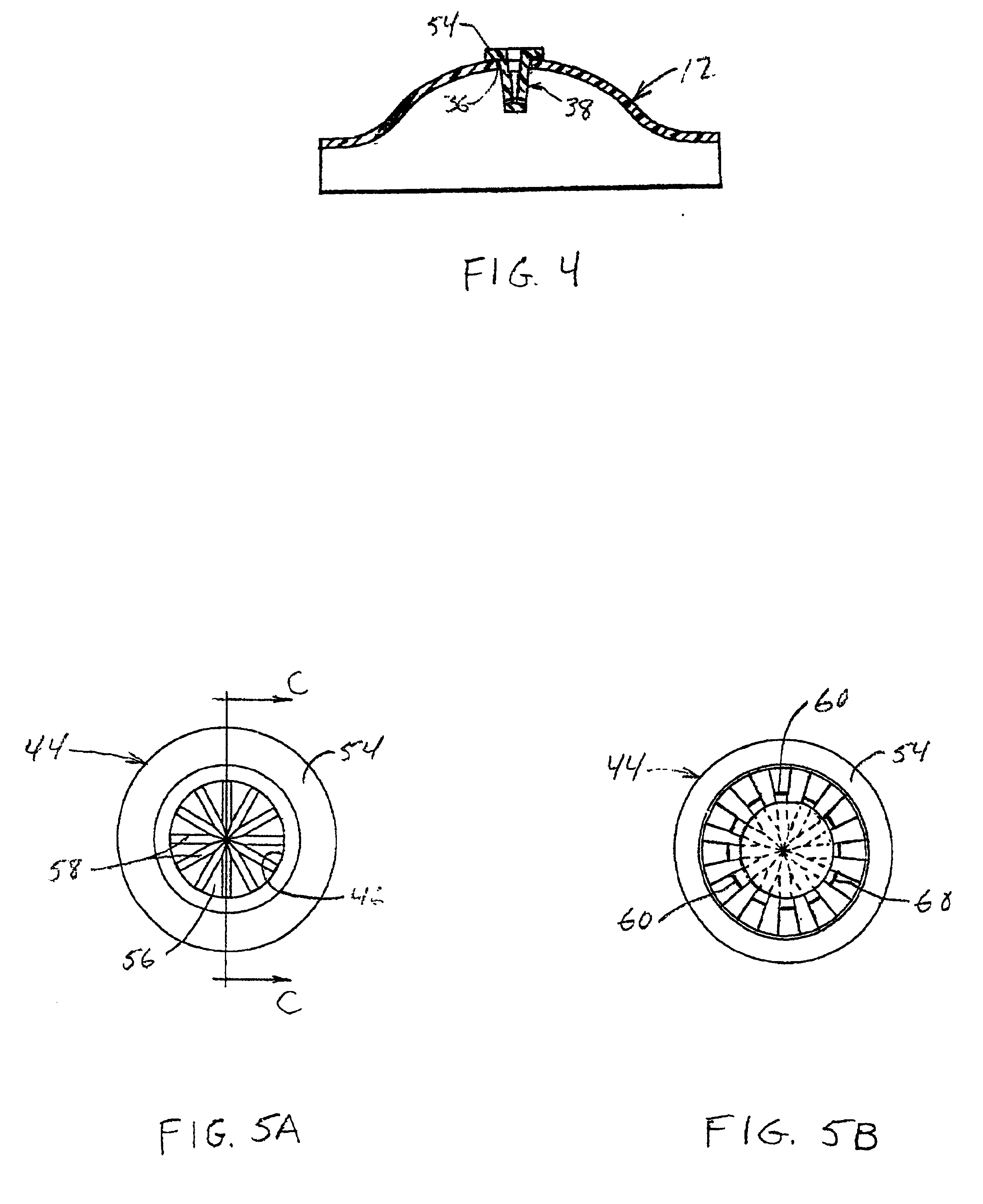Respiratory equipment spacer assembly
a spacer and respiratory equipment technology, applied in the field of respiratory equipment, can solve the problems of patient considerable physical discomfort, constant loss of patients, and associated with the use of large-volume spacers, and achieve the effects of reducing compressibility effects, improving drug delivery, and reducing volum
- Summary
- Abstract
- Description
- Claims
- Application Information
AI Technical Summary
Benefits of technology
Problems solved by technology
Method used
Image
Examples
Embodiment Construction
[0024]Referring to FIGS. 1-4 collectively, there is shown a presently preferred construction of a ventilator spacer body number 10 (FIG. 1), including a first portion 12 thereof (FIG. 2) and a second portion 14 thereof (FIG. 3), of the ventilator spacer assembly of the present invention. When assembled, the body member 10 defines a bulbous yet compact medicament expansion chamber. Preferably, the central region 16 of body member 10 is at least semi-spheroidal with the first portion 12 defining an outwardly bulging profile and the second portion 14 defining a predominantly flat profile, whereby central region 16 assumes a generally turtle shell shape. First and second portions 12, 14 of body member 10 may be fabricated from any suitable rigid to substantially rigid metallic or plastic material. Presently preferred materials include ABS, polycarbonate or the like. To facilitate alignment and assembly of the first and second portions 12, 14 one of the first and second body portions is ...
PUM
 Login to View More
Login to View More Abstract
Description
Claims
Application Information
 Login to View More
Login to View More - R&D
- Intellectual Property
- Life Sciences
- Materials
- Tech Scout
- Unparalleled Data Quality
- Higher Quality Content
- 60% Fewer Hallucinations
Browse by: Latest US Patents, China's latest patents, Technical Efficacy Thesaurus, Application Domain, Technology Topic, Popular Technical Reports.
© 2025 PatSnap. All rights reserved.Legal|Privacy policy|Modern Slavery Act Transparency Statement|Sitemap|About US| Contact US: help@patsnap.com



